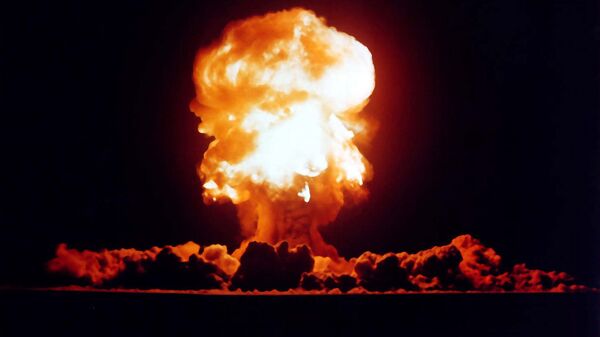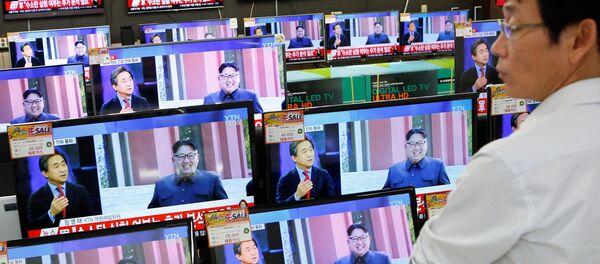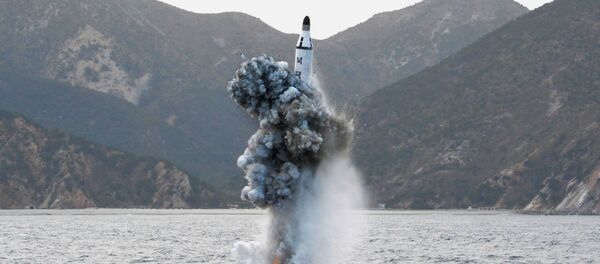Last week, the US and South Korean navies participated in provocative military drills in the Sea of Japan that were aimed at demonstrating a show of force in the wake of the North’s recent nuclear tests.
Pyongyang has described the exercises as "advance preparation for mounting a preemptive attack," and has warned of extensive nuclear strikes if an attack is launched on its soil.
"If the aggressors and provocateurs dare mount a preemptive attack on the DPRK [Democratic People’s Republic of Korea], they will not be able to escape a merciless, nuclear retaliatory strike of justice," North Korean daily Rodong Sinmun said, according to the International Business Times.
US and South Korean vessels have never operated this close to the North Korean coast.
Seoul plans to conduct a number of joint exercises in the coming weeks. In November, South Korea, the United Kingdom, and the United States will participate in Invincible Shield air drills.
"The 'Invincible Shield' drill is aimed at improving the allies’ capabilities of attacking North Korea’s major military and leadership facilities (if provoked) but also intercepting incoming fighters from the North," a spokesman for the South Korean Air Force said last week, according to Yonhap news agency.
Seoul and Washington are also conducting a bilateral drill in Alaska through October 21 that will involve the aircraft carrier USS Ronald Reagan.
North Korea has conducted a number of nuclear and ballistic missile tests over the last year. On September 9, Pyongyang detonated a miniaturized nuclear bomb, raising the stakes on the Korean peninsula and marking a major step forward in the North’s ability to launch a nuclear attack.
These tests have resulted in harsh new sanctions from the United Nations and criticism from a number of countries, including Pyongyang’s allies.
The South has taken these developments as an opportunity to boost its defensive capabilities. Seoul and Washington have formalized an agreement to install a Terminal High Altitude Area Defense (THAAD) missile system on the peninsula, despite objections from both China and Russia that the system could be used offensively and place their own national security at risk.
Earlier this week, Kim Young Hoo of the Korea Defense Industry Association (KDIA) said that South Korean defense firms should work more closely with American counterparts to develop "mutually beneficial" technologies.
"We are looking for a cooperation model from the US, since we have a [requirement] for high tech capabilities," he told Defense News.
"We’ve been very cooperative with the US defense industry. But there are more opportunities. We can grow together, achieving a mutual interest."





